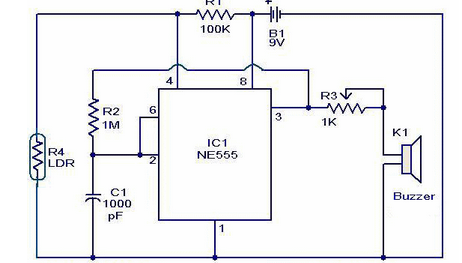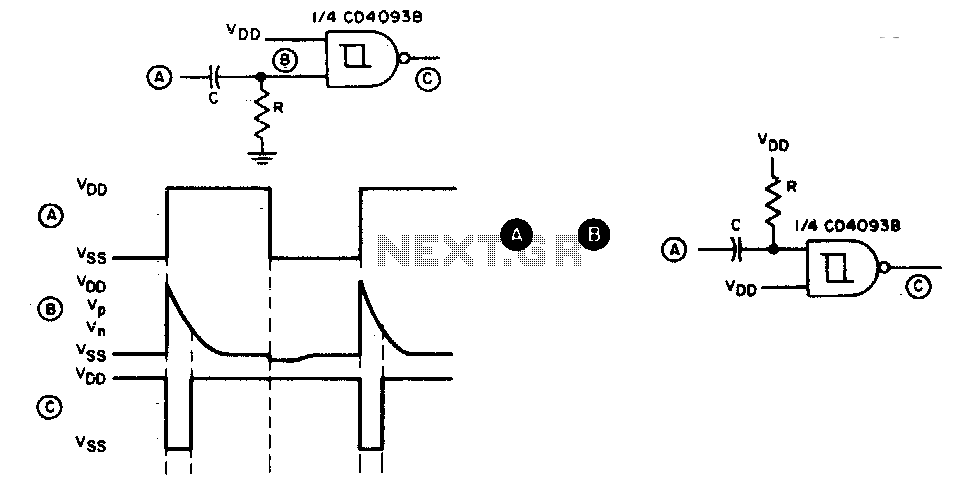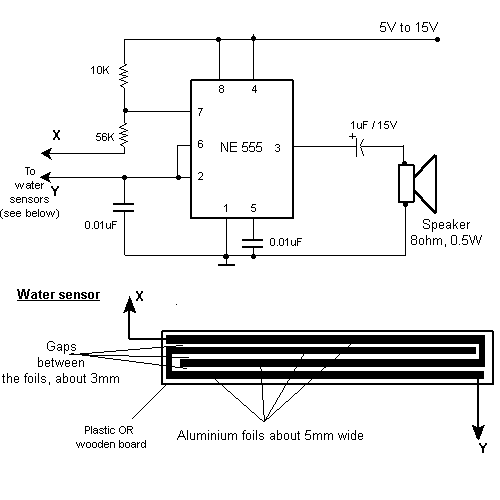
Dark Detector

The dark detector circuit presented here is designed to trigger an audible alarm when the ambient light in a room decreases. The circuit is constructed around a timer IC.
The dark detector circuit operates by utilizing a light-dependent resistor (LDR) as the primary sensor to detect changes in light intensity. When the light level falls below a certain threshold, the resistance of the LDR increases, which in turn affects the voltage at the input of the timer IC.
Typically, a timer IC such as the NE555 is employed in this circuit configuration, functioning in monostable mode. In this mode, the timer is triggered by the voltage change caused by the LDR. The output of the timer IC can be connected to a small speaker or buzzer to produce an audible alarm.
The circuit may also include a potentiometer to adjust the sensitivity of the LDR, allowing for customization based on the specific lighting conditions of the environment. Additional components may include resistors and capacitors to set the timing duration for how long the alarm sounds after being triggered.
Power for the circuit can be supplied through a standard battery or power adapter, ensuring that it is suitable for various applications, such as security systems or automated lighting controls. This dark detector circuit is a practical and efficient solution for alerting individuals when a room becomes dark, enhancing safety and awareness in various settings.The dark detector circuit shown here can be used to produce an audible alarm when the light inside a room goes OFF. The circuit is build around timer IC N.. 🔗 External reference
The dark detector circuit operates by utilizing a light-dependent resistor (LDR) as the primary sensor to detect changes in light intensity. When the light level falls below a certain threshold, the resistance of the LDR increases, which in turn affects the voltage at the input of the timer IC.
Typically, a timer IC such as the NE555 is employed in this circuit configuration, functioning in monostable mode. In this mode, the timer is triggered by the voltage change caused by the LDR. The output of the timer IC can be connected to a small speaker or buzzer to produce an audible alarm.
The circuit may also include a potentiometer to adjust the sensitivity of the LDR, allowing for customization based on the specific lighting conditions of the environment. Additional components may include resistors and capacitors to set the timing duration for how long the alarm sounds after being triggered.
Power for the circuit can be supplied through a standard battery or power adapter, ensuring that it is suitable for various applications, such as security systems or automated lighting controls. This dark detector circuit is a practical and efficient solution for alerting individuals when a room becomes dark, enhancing safety and awareness in various settings.The dark detector circuit shown here can be used to produce an audible alarm when the light inside a room goes OFF. The circuit is build around timer IC N.. 🔗 External reference





